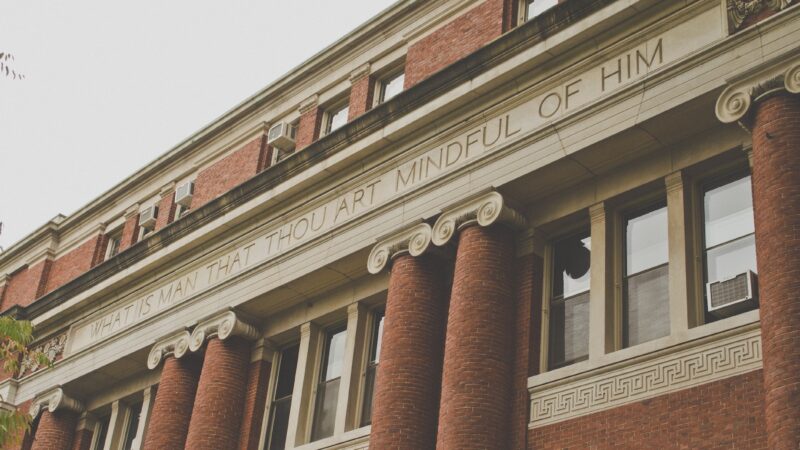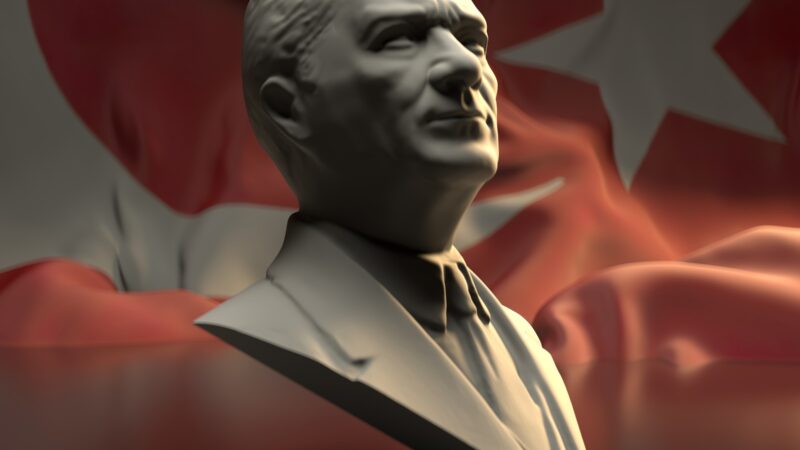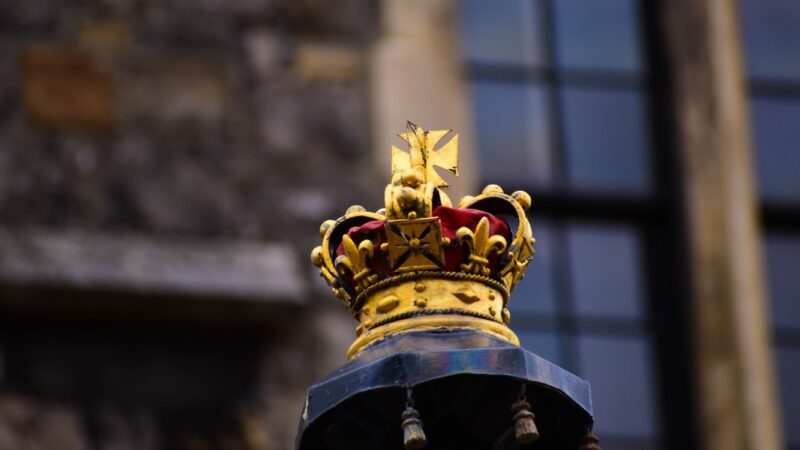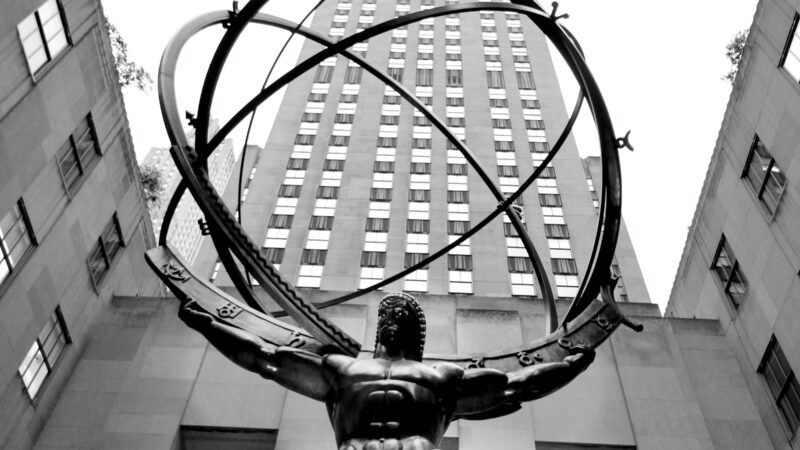Going on Holiday? Skip LA
California—The Golden State. Land of sunshine, Hollywood, and endless beaches, and destination for tourists from all over the world, especially for those seeking to get away from colder climes during the winter holidays.
However, for residents, over the past decade such California dreamin’ has become more and more just that—a dream. I usually try to resist writing America-centric articles, but, as a CA native living in Los Angeles County, I feel the need to warn friends and readers in other parts of the world about what is actually going on here, especially as vacation season approaches. While for most people life is generally fine outside of the city centers, crime, homelessness, and their economic consequences are becoming less avoidable, and I feel it incumbent on me to dispel the naive idea that Hollywood is anything like in the movies.
But before laying out examples of what’s going on here, I’ll lay out the policies and figures that have allowed, if not encouraged, such things to grow, especially over the past couple of election cycles. While not exhaustive, nor the beginning of the state’s problems, the main culprits for the current state of affairs are Proposition 47, so-called zero-cash bail, and Los Angeles District Attorney George Gascon, all of which amount to a gross machine that benefits criminals at the expense of law-abiding citizens.
Touted, in Orwellian irony, as the Safe Neigborhoods and Schools Act, and partly authored by then San Francisco DA Gascon, 2014’s Prop 47 ‘reduces’ crime by downgrading ‘nonviolent’ crimes and drug possession from felonies to misdemeanors. Written against a 30-year-fermented spectre of the 1980s’ War on Drugs, Prop 47 was presented to a seemingly more sympathetic and enlightened public as a way to address the costs and racial disparities of prison overcrowding (the construction of more prisons being apparently both too expensive and too stigmatizing). Simply put (and, depending on where one is, common to see), shoplifting items is no longer a felony so long as they’re under $950, and drug possession, even of drugs like Rohypnol and fentanyl, would now count as a misdemeanors. In practice, the law has led to the release of repeat offenders, who continue to convey drugs and fill trashbags with less than $950 in merchandise to presumably be kept or fenced elsewhere.
Prop 47’s effects have been compounded by the state’s elimination of cash bail for suspects picked up by police. Usually, if a suspect cannot pay bail, they must wait in prison until their arraignment; zero-cash bail means those arrested for misdemeanor and non-violent felonies (with ‘non-violent’ covering a lot of ground that many argue it shouldn’t) can be released same-day, to the bewilderment of their victims and the disheartening of the cops who arrested them. In its initial form as part of the emergency policies from CA’s 2020 Covid-19 lockdowns (its then iteration put in place to protect already jailed prisoners from the virus by keeping it out amongst the public), zero-cash bail led, like Prop 47, to an almost immediate rise in repeat offenders. After ending in July, 2022, it was reinstated in May, 2023, with a grace period before later reimplementation, when an LA County Superior Court judge ruled detaining offenders ‘solely for the reason of their poverty’ to be unconstitutional (with ‘solely’ arguably covering even more ground than the above ‘non-violent’). While, since it went back into effect a month ago, only three percent of arrests were due to repeat offenders (a three percent that could have been prevented), twelve cities are, nonetheless, suing the county to get rid of the program. With little immediate consequence beyond a slap on the wrist, and benefitting from the DA Office’s backlog of over 10,000 cases yet to be filed, offenders old and new have predictably been emboldened to commit new crimes before they have even been charged for previous ones.
Of course, zero-cash bail was not an invention of 2020; it had been pushed for years by progressive advocates of judicial reform who allege bail to be an unfair punishment of the poor and minorities. Like Prop 47, zero-cash bail was sold to voters as the best means to provide equity for disenfranchised communities unfairly oppressed by supposedly too harsh sentencing and too costly bail schedules. This perspective is maintained by many voters, as well as the politicians they elect and reelect. One such politician is, of all people, LA’s current District Attorney.
Another tool in LA’s soft-on-crime machine, DA George Gascon moved south after pushing empathy-based policies in San Francisco, to spectacular lasting effect, to spread the same. On his election, Gascon declared that his office would not prosecute criminal enhancements—felony firearm possession, gang affiliation, multiple-strikes status, &c—that would require adding jail time to conviction, and that he also planned to retroactively review even death-row cases to remove such enhancements to give lighter sentences. Such a blanket refusal to enforce established criminal law would, one would think, seem tantamount to a de facto cancelation of it—something under the purview of legislature and courts, but not an executive. Either way, with such radicalism Gascon started his tenure being lenient on criminals, present and past, while working against law enforcement and public safety.
Put in place to ostensibly reduce prison populations and mitigate racial disparities in conviction numbers, Prop 47, zero-cash bail, and Gascon’s backwards approach to crime have had effects visible across the state, but especially in inner cities. One of the most glaring effects has been the growth of homeless encampments on sidewalks, in vacant lots, and under road overpasses. Freed from the worry that their drug habits and the theft that supports them will land them a felony, and assured they will be quickly released if they actually do get picked up, the homeless have become a local fixture in LA over the past decade. Indeed, even in Pasadena, a veritable Hollywood Producers’ Row, one can now see tarps, trash, and transients, the forward envoys of future encampments. Whether any countervailing NIMBYism towards this new ad hoc infrastructure will provoke residents to change their voting habits remains to be seen, but more on that below.
While most residents and tourists can avoid the fire and biohazards posed by these encampments, there are, nonetheless, the dangers posed to people and businesses, with immediate as well as lasting effects. Contrary to the romantic stereotypes behind the policies, the participants in the current crime wave are far from the downtrodden Jean Valjeans and Aladdins that many predominantly Democrat CA voters sympathetically assume. As could have been (and was) predicted by anyone to the right of the Prime Minister who is allegedly not Castro’s illegitimate son, leniency towards crime has produced more of it, with smash-and-grab thefts, often during business hours, becoming a daily occurrence (for example this, or these, or yet this, or this, or that, or this, or this, et cetera). And theft always carries the implicit threat of violence, as the manager of my local Ralph’s grocery store learned when confronting a thief this past September. Because of stories like this, chain store employees have been ordered not to engage with thieves so as to avoid insurance liability, reinforcing the sense of entitlement displayed by thieves (property and business insurance is a whole other topic I don’t have time to explore; in short, by rendering businesses uninsurable, the above policies are precluding future entrepreneurship in the state touted, for now, as the world’s fifth largest economy).
After putting even basic necessities under lock and key did not work, retail mammoths like Target have, predictably, shut down or plan to shut down CA locations. Furthermore, food spots as seemingly staid as Starbucks are starting to pull out due to safety concerns. In addition to removing day-to-day resources (and revenue) from inner cities, stores that theoretically have the most to gain from tourists are leaving them bereft of amenities—from coffee and food to toiletries to diapers to medicine to everything else that might make their stays near key landmarks more enjoyable.
One might rightly say that with planning and situational awareness most of the dangers surrounding in-store theft can be avoided. Indeed, while these are always one’s own responsibility, first, they are now expected by law enforcement. Displaying the ‘blaming the skirt’ mentality of Gascon’s approach to criminals and their victims, LA police earlier this year advised people not to wear jewelry in public. Unfortunately, in addition to punishing locals with the consequences of their actions (both in what they wear and in whom they vote for), such approaches affect visitors, too. Tourists not keeping up with LA politics may not have heard the advice—and might suffer the consequences of their assuming a baseline of social trust in the City of Our Lady of the Angels.
And theft is not the only, or even worst, crime residents and visitors need to worry about. Indeed, while there are three years of incidents to choose from, two recent cases show just what DA Gascon thinks of law-abiding citizens in relation to criminals. In September an adult woman harassed and beat up a thirteen-year-old after school at a McDonald’s. Despite her being caught on camera by multiple witnesses, the woman’s sentence was reduced from a felony to a misdemeanor at the request of DA Gascon, whose office cited the fact that the teenager may have escalated the interaction—presumably by putting her hands up to protect her face—thus expanding the above skirt-blaming to apply to underage girls. In a more recent case that’s perhaps too close to the above idiom for comfort, a woman in Long Beach was sexually assaulted in broad daylight by a homeless man who, grinning with pants unzipped, lifted her dress and thrusted against her so vigorously that it knocked her down before he was pepper sprayed and chased off by a bystander.
Despite the man’s having been caught on camera, and despite its being against the requests of Long Beach City Prosecutor (who, in his request for a felony charge, had to coddle to the DA’s sympathy for criminals by emphasizing the rehabilitation the man would receive), Gascon initially charged the man with a misdemeanor for sexual assault (presumably for the groping) and vandalism, citing the lack of evidence of the man’s intent to actually commit felony rape. The decision’s having provoked outrage from many directions, the DA eventually charged the man with a felony, but the fact that this was not the initial charge speaks to the disconnect between Gascon and the cities and citizens he has sworn to protect. What more the DA’s office needed to discern a man’s intent than his pressing his exposed member against a woman’s backside I won’t presume to know, but one thing is clear: despite claiming, in campaigns, to stand for children and women, DA Gascon sees them both as culpable when attacked, and treats violence against the latter the same as mere property crime.
One should not miss the correlation between that last story and public transit. Tourists expecting LA public transit to be like that of their home countries should be warned: it is now a truism that to ride public transit is to risk being harassed, which, now, always carries the threat of violence. While such occurrences certainly precede the last decade (I’ve personally witnessed them when riding the subway), stabbings on and near public transit are becoming more frequent. Indeed, incidents of violence are so frequent on transit that drivers and conductors do not even stop for them, even when it places LA Metro in legal liability. Granted, at this rate if they stopped for every instance of crime they’d never get anywhere.
Such stories can leave one wondering where the police are in all this. The answer? Just as frustrated as the rest of us. Predictably, LA’s legal leniency to crime, added to the extra scrutiny on police across the country (see ‘the Ferguson Effect’), has left many police discouraged and looking elsewhere for work, if not retiring early, with few willing to fill their vacated positions. One would imagine this would cause celebration among the ‘abolish the police’ lobby (a formidable presence in LA—a recently elected member of the City Council openly advocates the policy direction). However, the dearth in law enforcement has prompted the city to raise law enforcement pay and bonuses to entice people to take the, sadly, thankless job.
And, again predictably, the lack of police protection will more and more be filled by citizens willing to defend themselves. Recently, when a man came into their jewelry store armed with a hammer and a can of bear mace, one family did just that. Interviewed on local talk radio, one of the family members articulated what many are feeling across the county: ‘We had to do something…I don’t feel secure anymore in this city…These people are robbing because they don’t want to work, not because they were born poor…I don’t think it’s fair, you know?…Politicians are not working in favor [of] the small [business] owners or [of] the regular citizens. They’re just working in favor of [criminals], you know?’ This sentiment is felt by others; on hearing the DA would not initially treat her incident as attempted rape, the Long Beach woman mentioned above has purchased a taser and plans to get a gun permit. She is part of a growing number of voters from the usually pro-gun-control LA who are rediscovering the value of the Second Amendment—a trend only augmented by the Jewish community after the outbursts of antisemitism following Hamas’s attack on Israel.
As I’ve mentioned, such policies and perspectives are advocated in the name of reducing prison populations and mitigating disparities of minority representation in crime statistics. If you’re a liberal progressive who wants to be the virtuous hero and get rid of systemic racism, you’ll vote for these policies! What are you, a RaCiSt TrUmP sUpPoRtEr?! And, indeed, this is effective political rhetoric in California; unable to shake the cast of being, as the Governor claimed his own 2021 recall was a solely partisan Republican plot (somehow possible in a majority Democrat state, in a county with even higher Dem. percentage).
Gascon’s two previous recalls failed to garner enough signatures to oust the man. As I hope I’ve shown, this has mainly been a win for criminals, not voters—primarily minority. This, unfortunately, is a common story. Like many well-intentioned progressive policies that lead down the primrose path, soft-on-crime approaches to public safety meant to allegedly help minorities have ended up hurting them the most, Black and Hispanic people making up the wide majority of LA’s violent crime victims.
Thankfully, the recalls for Gascon were not the final word, and, with the effects of his policies being harder to ignore, Gascon will, hopefully, be replaced in Spring 2024 by a tougher-on-crime candidate (which is a low bar at this point). However, that would depend on voters’ connecting the dots between policy and outcome, as well as placing their own public safety over rhetorical kneejerks and partisan allegiance. I have encouraged my own liberal friends that, things having moved so far left in California, to consider voting for other policies and candidates—even, *gasp*, Republicans—would not be hypocritical but, rather, completely consistent with their values. Nonetheless, part of my optimism often involves the belief that, yes, things can always get worse, and that sometimes they have to for people to learn.
I usually hesitate to blithely throw around the word ‘tragic,’ tragedy requiring the added element of some kind of fateful choice or circumstance that produces the unfortunate outcome, but in California’s case I think the adjective fits—but not simply because we’re getting the policies and persons we voted for. In fact, California’s political elite has a history of ignoring voter decisions. While CA Attorney General, current Vice President Kamala Harris refused to defend her own state’s law (affirmed twice by voters) identifying marriage as being between a man and a woman when it was brought before the Supreme Court. Similarly, despite CA citizens’ voting in 2016, albeit by narrow margins, to speed up the penalty process rather than repeal the death penalty, when our Governor of One Hairstyle but Many Nicknames (Nuisance, Newsolini, Newscum, Gruesom…) entered office in 2019 he placed a moratorium on the death penalty, regarding his own personal predilections as trumping state law. DA Gascon is, thus, in good (or bad) company.
If anything, the tragedy of California is in our naively following the same, ever-sweetening pied piper songs of those we elect without recognizing the ever-souring and more dangerous opposite direction in which they are leading us—and not ousting them when they directly ignore our decisions.
While informing CA readers of what’s going on in LA County and convincing some to reconsider their voting patterns would be a great boon, this article’s focus is, in the end, on warning those outside of the state about what to expect should they choose to visit. Don’t get me wrong: I love southern California, which is why I am so saddened and angered by the direction it has gone—and did not need to go. Furthermore, my love stops when it places people in danger, and it behooves me and other Californians to try to prevent others from being victimised by our choices. With a lack of public law and order, things have gotten much less predictable in LA, and, while residents who have not left the state may have the werewithal to handle it, visitors expecting Hollywood to align with their expectations may be in for a rude awakening.
Even scenic outlooks far from the city center are not free from threat, much less the freeways through the inner city. Popular food spots, from restaurants to taco trucks, now carry more risk of crime, and, while some efforts to reduce the presence of homeless encampments are moving forward, housing advocates and opponents of programs like 2020’s Project Roomkey are contending over whether to require all hotels in the city to fill unbooked rooms with homeless individuals, possibly landing future tourists in rooms next to drug addicts. Add to all of this the artificially (because of taxes) high gas prices, toxic algae and sewage at select beaches (and, what with runoff from the homeless encampments, virtually the whole coast after a rain), and unavoidable looneys apparently confused about when Pride Month is, and Hollywood is a very different town than is portrayed in its movies.
Nonetheless, if people are intent on coming to California, they can certainly have a wonderful time—there is a lot to see and much fun to be had. With Pacific Coast Highway running along the ocean from Santa Monica to Monterey, as well as the High Sierras and Yosemite, the Redwoods, and Death Valley (ironically one of the state’s safer places to visit), California is made for road trips. Locations like San Diego’s Balboa Park and nearby Zoo, Pasadena’s Huntington Library and Gardens (which, among other exhibits, boasts prints of Shakespeare from his lifetime), and Long Beach’s Aquarium of the Pacific are great for those wanting to see the sights while getting in their steps and tiring out their kids. There are also theme parks like Universal Studios, Six Flags Magic Mountain, and, of course, Disneyland. With prudence, planning, and flexibility, travelers can easily have a great time, so long as they avoid certain areas, keep their car doors locked, and watch their luggage until arriving at their hotel room. If one has access to previous visitors or a local who can direct them on which sights to see and which to skip, so much the better.










The White Man’s Latest Burden
“Take up the White Man’s burden; Send forth the best ye breed; Go bind your sons to exile; To serve your captives’ need” – Rudyard Kipling, from The White Man’s Burden (1899).
The relationship between foreign policy and immigration is relatively straightforward, yet routinely overlooked and often manipulated. Since Hamas’ attack on Israel and the ensuing bombardment of Gaza – an act which has sparked widespread protest across the Western world, overwhelmingly constituted of migrants and their descendants – there have been calls amongst the neoconservative commentariat for Britain to “Stand Up for Israel”, which – for the uninitiated – means funnelling more money to the Middle East.
Once again, neoconservatives (a.k.a. leftist and liberal infiltrators of the right) are advocating military support to foreign countries and generally running defence for imprudent militarism, both of which increase the risk of mass migration to the West; contributing to the Islamification of the Western world and the retreat of Western liberalism within its own borders, a subject which neocons love to talk about.
Those of us on the paleoconservative right who oppose attempts at humanitarian intervention do so with the knowledge that such actions do risk creating more destabilising migration, disrupting the already very fragile state of Western countries; a fragility revealed by the imported ethnic tensions which have since exploded onto the streets, arising not from an investment in Britain’s national interest, but the interests of other nations.
As such, giving Israel a blank check to do whatever it wants shouldn’t be Britain’s top priority. Putting aside the evident bloodlust of the chickenhawks and the various ethical problems of taking the plea for “proportionality” to its logical conclusion, the idea that any allegedly right-leaning commentator should use their airtime to run defence for every decision the IDF makes, without considering the second-hand consequences for the British state, should be challenged whenever the opportunity arises.
I have no problem with a neighbour using self-defence when confronted with a late-night burglar, but if his idea of self-defence is to fire a nuke in the home invader’s general direction, people from the town over might have some concerns. Similarly, a government’s decision to start a war is its own, but to call ‘feign knights‘ immediately after attacking the enemy in an especially vulgar way is unlikely to win support from the right-minded member of society. This may seem a bit hyperbolic, but you get the general idea – Israel should not be allowed to use self-defence as an excuse to create another migrant fiasco and expect us to make-do.
Alas, the British establishment prides itself on being the sharpest arrow in the United States’ increasingly spacious quiver; if Israel is America’s greatest ally, then Israel is Britain’s greatest ally as well.
Left-wing so-called ‘anti-imperialists’ (I use that phrase only half-seriously) are capitalising on the contradictions within neoconservatism, maintaining the West is simply facing the consequences of its actions. Palestinians shouldn’t suffer because of their government’s actions, but the British should. By portraying immigration as a mere component of a larger Western imperialist ratchet, leftists hope to depoliticise the issue of immigration. In turn, they hope to divert people’s concerns away from domestic policies they entirely condone, especially the concerns of traditional Labour voters and their longstanding opposition to mass immigration.
What’s that? Your daughter got molested by a Pakistani man who laughed about turning her into a kebab? Tut-tut. If only you’d opposed intervention in Kosovo, you could’ve prevented it! Guess you’ll just have to put up with things as they are. Don’t Look Back in Anger.
No matter how much that complain about them, it remains fact that leftists march in lockstep with liberals and centrists on immigration. To paraphrase a now legendary tweet, you can exist on the left and support some degree of privatisation (i.e., as a social democrat) but you can’t exist of the left and oppose immigration. Contemporary leftism isn’t about ‘material interests’ or whatever, it’s about anti-whiteness.
It would take a great deal of reform, but there is nothing stopping Britain from arming foreign nations and denying entrance to foreigners, refugee or not. However, that’s beside my point, and certainly beside the point of leftists trying to con people into ignoring the demise of their own communities.
Together, neoconservatives and leftists have reinvented the White Man’s Burden. The former has popularised the idea that the West has a moral responsibility to intervene when other parts of the world fall short of liberal democratic practice, whilst the latter insists it is the burden of the West – that is, an extension of its moral obligation to arbitrate the world – to import every person that tries to cross the border, despite what we know about the UK’s foreign-born population.
According to the 2021 Census, the three most common non-UK countries of birth are India, Poland, and Pakistan, quite similar to the results of the census 20 years prior. Contrast this with the targets of major Western interventions over the past 20 years, all of which are much further down the list: Iraq (40), Afghanistan (43), Syria (52). Non-Western countries with larger foreign-born diasporas in the UK include Nigeria, China, Bangladesh, Philippines, Kenya, Sri Lanka, Ghana, Zimbabwe, Jamaica, Turkey and Somalia, all of which are in the top 30.
Of course, political events are reflected in the data. The Syria-born population of the UK grew considerably between 2001 and 2021, but this still implies Britain’s demographic complications aren’t primarily the result of Team America-style foreign escapades.
Rather, they are the result of an immensely stupid decision to liberalise border restrictions for the sake of Diversity – the official state dogma since the early noughties – to maintain a steady supply of cheap and flexible labour, and to keep the national Ponzi scheme – that is, the UK’s pension system – afloat until Islamists wipe out London with their DWP-funded nuclear arsenal. In short, foreign wars definitely haven’t helped, but they’re not the root cause.
Despite this, neoconservatives have tried to make the recent public displays of ethnonarcissism about the future of “Judeo-Christian” liberal values in the face of resurgent “Islamofascism”, whilst leftists have construed concerns about the protests as a deviation from the West’s need to demonstrate moral leadership – that is, to stand up for the downtrodden Palestinians and, of course, to import Infinity Migrants.
Liberals consider themselves above tribal notions of loyalty, insisting on a fundamental commitment to abstract ‘values’, whilst the socialist is a patriot – a patriot for every nation except his own.
And just when things couldn’t get any worse, Daftywaffen’s glorious leader has been allowed back on Twitter weeks before another mass protest in London on Remembrance Day – what a coincidence!
At a time when Britain is experiencing the inevitable fallout of the left-liberal immigration dogmas and neoconservative foreign policy, with hostility to the humanitarian ratchet at an all-time high, what the public needs to remember is the real threat to stability isn’t mass immigration but the FAR-RIGHT (!!!).
As we all know by now, protests are a milleniLOL ‘Generation Left’ pipedream. Remember when protesting British intervention in Iraq worked? Remember when a protest was allowed to occur that didn’t already have state backing? Me neither. Call me crazy, but I doubt Israel is going to take “proportional” action over a protest in London, just as I doubt a hundred-or-so people with British flags will stop our political class from wrecking the country.
Indeed, it is remarkable how literally every anti-British faction has developed a reason as to why the British people need to put their authentic convictions on the backburner and do exactly what they want at this exact moment.
If you want to stop the scourge of Islamism within British society, the foremost threat to our Western liberal-democratic values, you must place Israel first and foremost in your political considerations; our struggles in defence of Civilisation are one and the same.
Send forth the best ye breed (to the Middle East).
If you want to stand up for your nation’s monuments and armed forces, you need to rally around a man funded by pro-Israel think-tanks to counteract anti-Israel protests, even though people with similar convictions to yourself have been arrested for far less.
Go bind your sons to exile (for protesting with an English flag).
If you want to stop the systematic grooming of white girls, you need to suspend your opposition to immigration and support Palestine; you need to accept any wave of “asylum-seekers” which you created and won’t be allowed to deport, even if their application is denied under our very liberal laws.
To serve your captives’ need (by importing them to your native land).
Ultimately, it is not our burden to take up arms in defence of foreign states – overtly or covertly – or accept mass immigration. The Israel-Hamas War is simply not our fight. Middle England doesn’t care about Israel or Palestine. Middle England cares about England and the sooner a British government is prepared to place Britain at the heart of its foreign policy, rather than vague and destructive humanitarian ideals, the better.
Photo Credit.